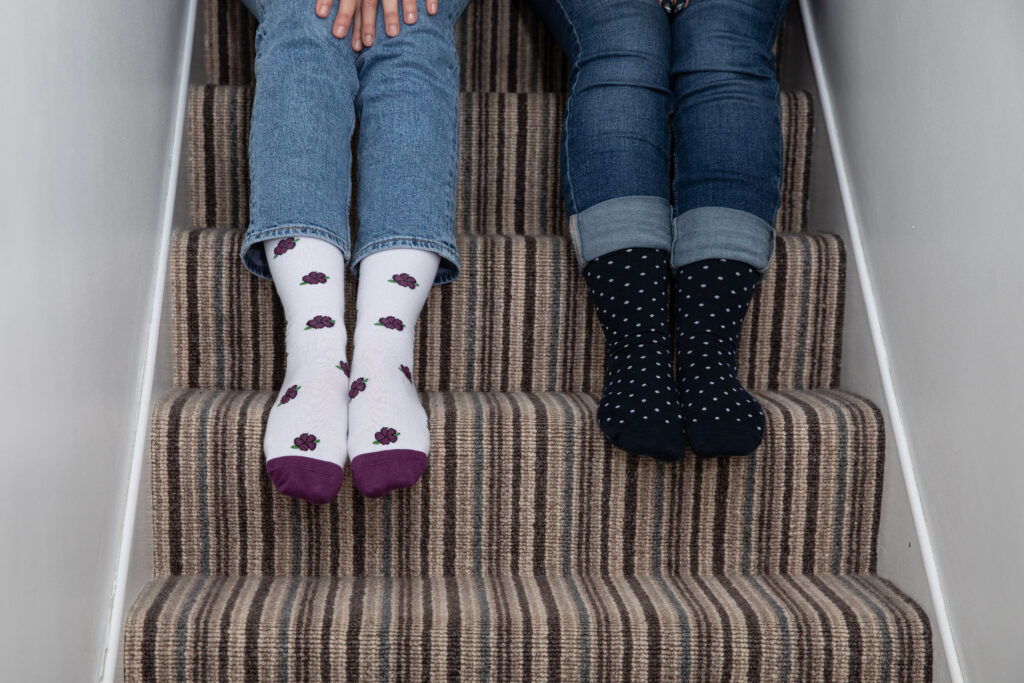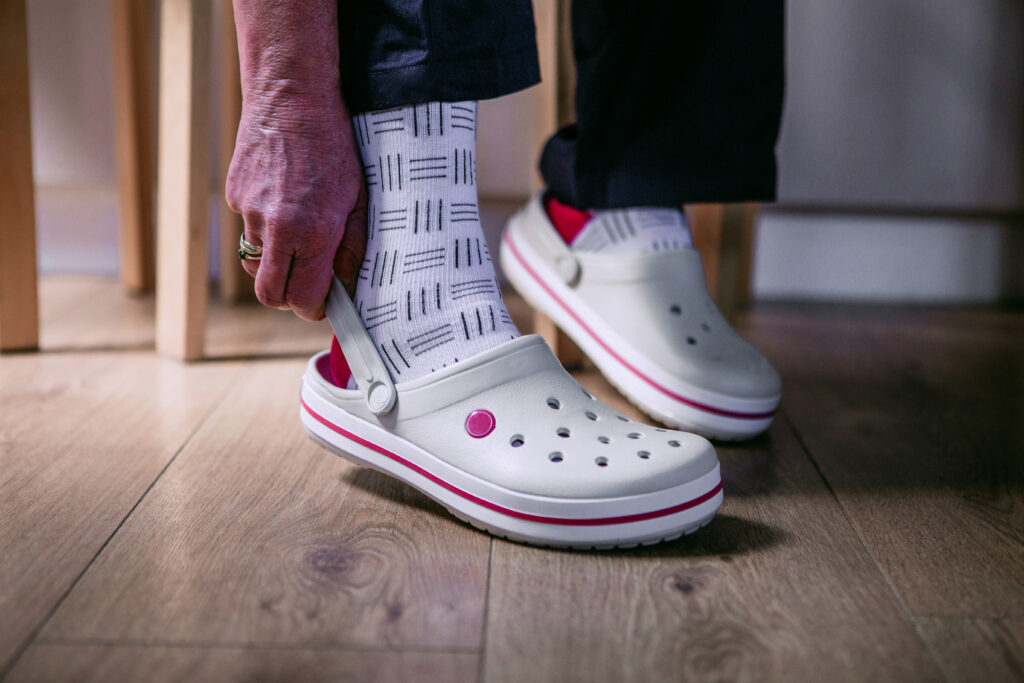You may have heard the term ‘medical-grade compression socks’ and wonder how they differ from the types of compression socks you see on the shelf of your local Boots or Superdrug, or for sale in the airport departures building. Well, in terms of how they work and what they do, there isn’t much difference. All types of compression socks, stockings and garments offer targeted compression to certain areas of the body to help manage swelling, prevent conditions like DVT, improve athletic performance, and increase the comfort of the wearer.
However, medical-grade compression socks for men and women differ in many ways. Perhaps the best way to think of them is that they’re highly specialised compression garments for specific medical issues. In this blog post, we’re going to explore what medical-grade compression socks are, how they’re used, what benefits they bring, and how they differ from regular compression garments.
What are medical-grade compression socks?
Medical-grade compression socks are tight-fitting socks that apply graduated pressure on your legs. Starting with most pressure at the ankle, it then gradually decreases as it moves up the leg towards the thigh. Perhaps counter-intuitively, this extra pressure on the blood vessels in your leg actually helps improve circulation and return the blood to the heart more efficiently. This can bring a raft of benefits including:
- Reduced swelling
- DVT prevention
- Fewer varicose veins
- Increased comfort
- Reduction in aches, pains and cramps
- Improved performance and recovery for athletes

How are medical compression socks different from regular compression socks?
Medical-grade compression socks differ from regular compression socks in several key ways, although their overall purpose and method of action remains the same. Let’s explore them:
Compression Levels
This is probably the biggest differentiator between the two. Medical compression socks typically offer much higher levels of compression that regular ones, usually in the range of 20-50 mmHg. Compare this to regular compression socks for men and women which offer compression levels between 12-2012 mmHg. This higher amount of compression offers benefits for people suffering from specific, acute conditions such as DVT, lymphedema, varicose veins, or leg ulcers.
Quality and Specification
Medical-grade compression socks often fall under the banner of regulated medical devices. Consequently, they undergo stricter quality control measures to ensure consistent pressure application and durability. They also must adhere to a wider range of requirements and regulations.
Regular compression socks, designed to be worn everyday by people in a range of professions are aimed more at the consumer market. Hence why they’re available in a wide range of shops and outlets.
Availability & Use
Due to their specific nature and higher levels of compression, it’s essential that a medical professional offers guidance on which socks you choose. They need to offer the exact right combination of size, fit and pressure for your condition and your overall health.
Extra Features
Some medical-grade compression socks will also have extra features needed by those who are recovering from injury or are less mobile. For example, some will have silicone pads on the bottoms of the soles for increased grip and traction when moving around. Some may also be toeless in design or have cutouts for the ankles depending on the patient.

What types of conditions can benefit from medical-grade compression socks?
It’s important that you consult with a medical professional before wearing any form of compression garment. Those suffering from circulation issues or high blood pressure, for example, may not be able to safely wear them. That said, medical-grade compression socks can benefit a huge range of injuries, conditions and issues such as:
Deep Vein Thrombosis (DVT)
Medical compression socks for DVT can prevent blood clots from forming in the legs, especially for people at high risk due to factors like surgery, prolonged bed rest, or certain medical conditions.
Lymphedema
This condition causes fluid build-up in the tissues, leading to swelling, pain and discomfort. Medical socks for swollen feet can aid in reducing swelling and improving lymphatic drainage.
Varicose Veins
These are twisted, enlarged veins that can cause pain, discomfort, and even leg ulcers. Medical socks for varicose veins can help improve circulation and reduce pressure in the veins, offering relief from the symptoms.
Leg Ulcers
The most common cause of leg ulcers is poor circulation, perhaps as a result of age, an injury, obesity, DVT or varicose veins. Wearing compression socks can promote healing of leg ulcers caused by poor circulation or venous insufficiency.
Pregnancy-related Swelling
Many pregnant women experience swelling in the legs and ankles and this is a natural part of pregnancy. However, it is undoubtedly uncomfortable, and compression socks can help manage this swelling and improve comfort.
Post-surgery Recovery
In some cases, compression socks may be recommended after surgery to improve circulation and reduce swelling in the legs. This may be especially important if the surgery or injury has caused reduced mobility in the patient. It’s for this reason that the elderly are sometimes advised to wear compression socks as well.
Medical-grade compression socks can be a helpful addition to your recovery and can help manage pain and swelling as a result of age, pregnancy or a host of other factors. We stock a wide range of medical-grade compression socks and stockings for men and women. Browse our shop to find out more. If you have any questions, then don’t hesitate to contact us.
